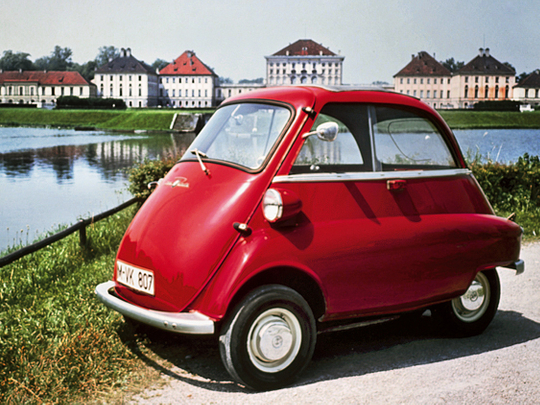
Last year in late July, wheels was in Frankfurt for the launch of BMW’s much-hyped Mega City Vehicle, dubbed the i3. Positioned as an “uncompromisingly sustainable vehicle” designed for urban spaces, Munich claims the i3 microcar will transform the way the world commutes.
So convinced is the carmaker that millions of euros have been invested in special plants including those that produce carbon-fibre reinforced plastics that make up the bulk of the car. Whether it revolutionises motoring or not, the i3 is BMW’s way of paying back a big favour done to it by another microcar, the Isetta, more than half a century ago.
Although the first BMW Isetta Moto Coupé appeared only in April 1955, the story of the bubble car dates back a few years when Renzo Rivolta whose Iso S.p.A traditionally manufactured refrigeration units, decided to branch out into automobile production. After finding moderate success with his line of scooters, motorbikes, and three-wheeled trucks, Rivolta debuted his first car, the Isetta (little Iso) at the 1953 Turin motor show.
The egg-shaped motor, which looked more like an inflated refrigerator than a car had a single door in the front. In fact, the entire front end of the car would hinge outwards to allow entry. Powered by a tiny 236cc, 9.5 horsepower motorcycle engine, the Isetta took over 30 seconds to reach 48kph from rest. Although it wasn’t a runaway success, the fact that a handful of Isettas managed to finish in the gruelling Mille Miglia race of 1954 brought it to BMW’s attention.
Having lost a few factories in the war and smothered by post-war sanctions, BMW was staring down the barrel at that time, and was in dire need of an inexpensive city car to help revive its fortunes. Seeing that Isetta fit the bill perfectly, Munich went ahead and purchased a licence from Iso in late 1954. Although BMW retained the Isetta’s styling, the powertrain was now based on its own one-cylinder, 250 cc, four-stroke motorcycle engine that produced 12 horsepower.
The car was so successful that BMW soon came out with a revision; the Isetta Moto Coupe DeLuxe in 1956 with a larger 298cc engine, that was good for 13 horsepower and 18.4 Nm of torque and an 85kph top speed. Then came the largest of the bubble cars, the four-seater 600, which was powered by a two-cylinder 600cc engine, which had a top speed of over a 100kph.
By the time production ceased in 1962, the bubble car had helped BMW shore up its finances and secure its future as one of the biggest automobile manufacturers in the world. Despite its production span of close to eight years and 160,000 cars, there aren’t too many good examples of the Isetta that are on the market today.
But if you get hold of one, you can expect to pay anything between Dh10,000 to Dh55,000 depending on its condition. But that’s small change to pay for a piece of history without which BMW as you know it today would perhaps have not existed.











